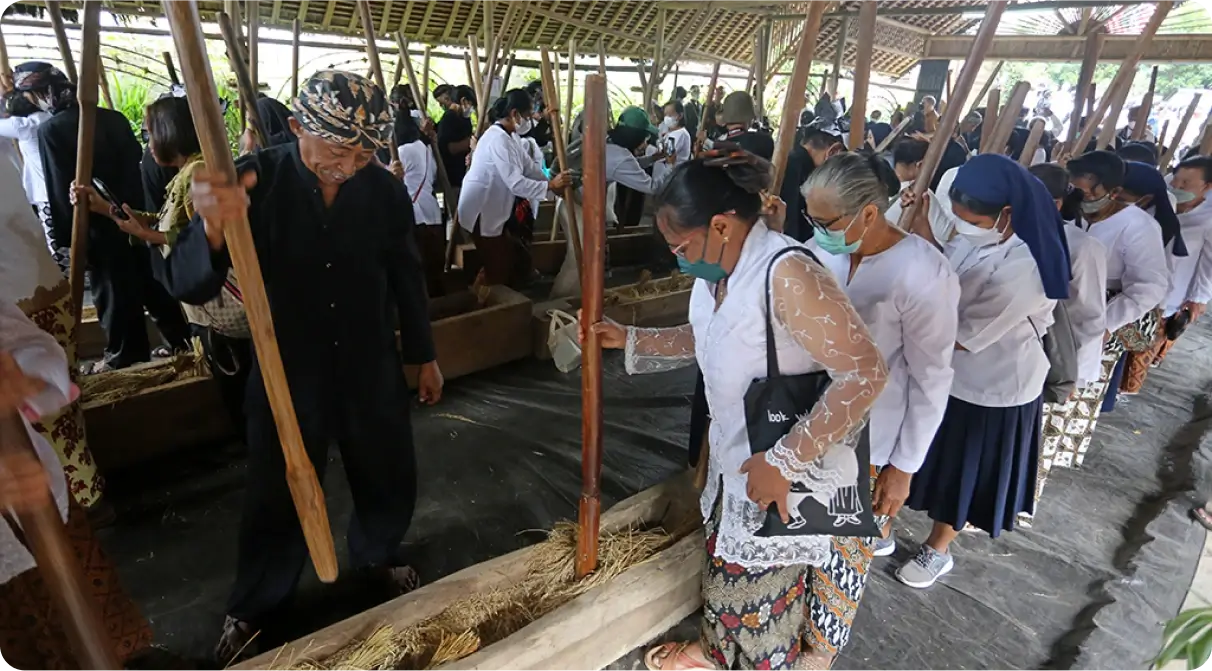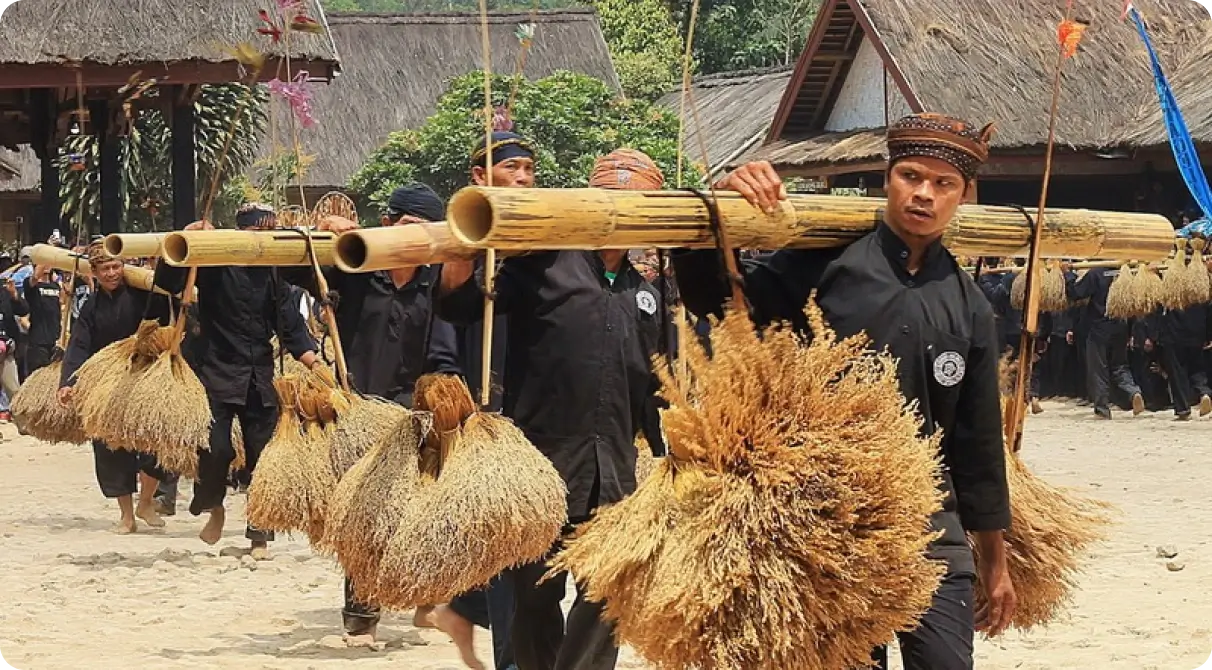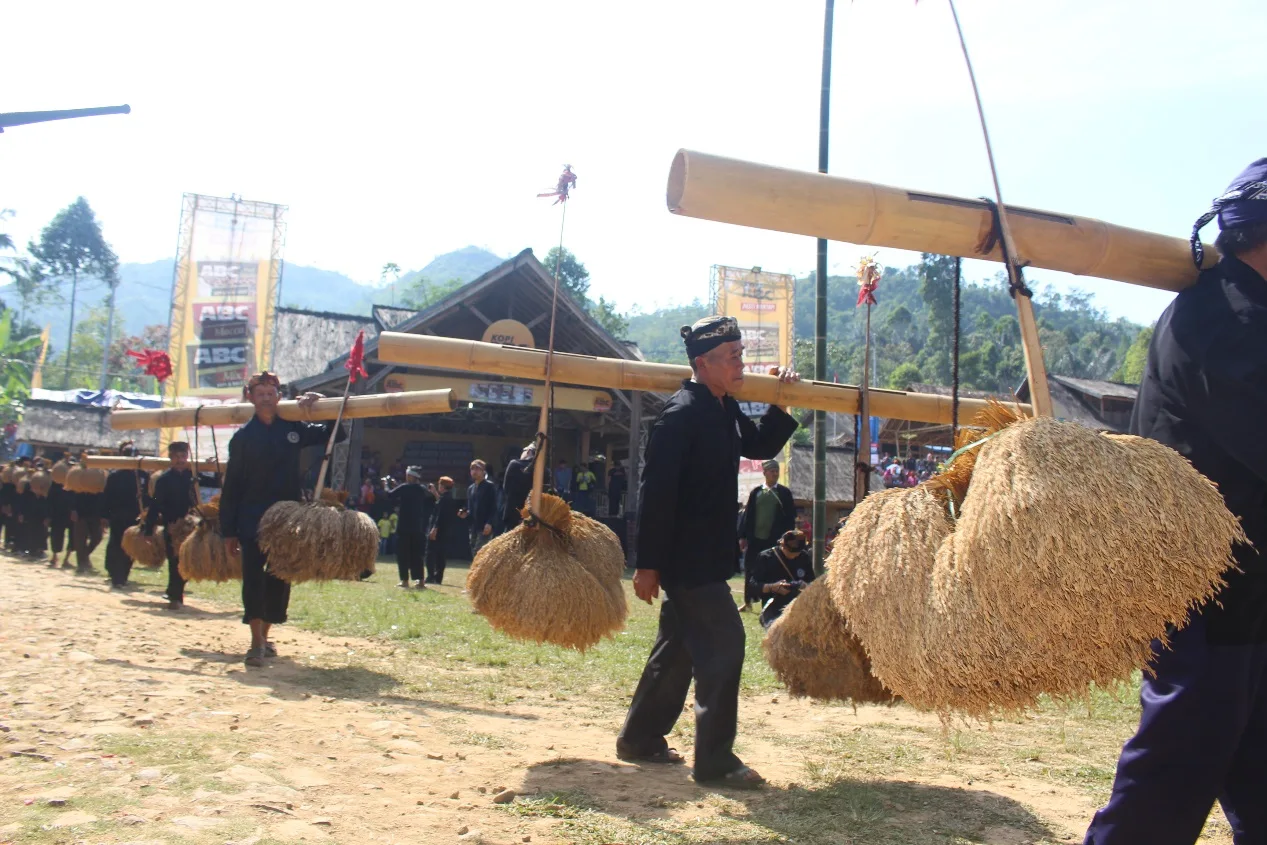Loading...
The history of Seren Taun can be traced back to a time before the Sundanese people knew Islam. The ceremony is a legacy from their ancestors that is still preserved today.Initially, Seren Taun was only performed by Sundanese people who were farmers. However, over time, the ceremony began to be performed by the general public, including urban dwellers.In the 15th century, Seren Taun became an official ceremony of the Sundanese Kingdom. The ceremony was held annually to pray to Dewi Sri, the rice goddess in Sundanese belief, for a bountiful harvest.During the Dutch colonial period, Seren Taun was banned. However, the ceremony was secretly preserved by the Sundanese people.After Indonesia gained independence, Seren Taun was again allowed to be held. The ceremony has become increasingly popular and is one of the tourist attractions in the Kuningan Regency.

Seren Taun is an annual traditional Sundanese ceremony that celebrates the harvest of rice. The ceremony has deep significance for the Sundanese people, not only as a thanksgiving for a bountiful harvest, but also as a way to strengthen community ties and preserve Sundanese culture.
At its core, Seren Taun is an expression of gratitude from the Sundanese people to God Almighty for the blessing of a plentiful harvest. The people are grateful for the fertile land, the favorable weather, and the hard work of the farmers who produce nutritious rice. Seren Taun is a manifestation of the Sundanese people's appreciation for nature and the fruits of human labor.During the Seren Taun ceremony, Sundanese people bring their rice harvest to the ceremony site. The harvest is then offered to Dewi Sri, the rice goddess in Sundanese belief. The ceremony is a symbol of the Sundanese people's gratitude for the harvest that has been given by God Almighty.
Seren Taun also serves as a way to strengthen community ties among members of the community. Through the shared experience of preparing for, participating in, and enjoying a communal meal, a sense of brotherhood and cooperation is strengthened. Seren Taun unites people of all ages, professions, and backgrounds in a common spirit, strengthening the bonds of community.During the Seren Taun ceremony, Sundanese people gather together to prepare everything that is needed. They work together to clean the ceremony site, prepare offerings, and dance and sing together. The ceremony is a way for the Sundanese people to get to know each other and strengthen ties among them.
Seren Taun acts as a vehicle for the transmission of Sundanese culture from generation to generation. The rituals, traditional music and dance, and offerings presented to Dewi Sri all preserve knowledge, beliefs, and practices that have been passed down for generations. The ceremony ensures the preservation and continuity of a rich cultural heritage for future generations.During the Seren Taun ceremony, Sundanese people perform various Sundanese traditional arts, such as jaipongan dance, pencak silat, and music. The ceremony is a way for the Sundanese people to preserve and introduce their culture to young people.

Kampret is the most common traditional Sundanese clothing worn at the Seren Taun ceremony. Kampret is usually made of batik or plain cloth. Kampret is usually white or black, which symbolizes purity and simplicity. Kampret has a simple cut, with long sleeves and a round collar. Kampret is usually equipped with buttons or a belt. Kampret is a loose-fitting garment that hangs down to the knees. It is usually made of a single piece of cloth that is sewn together at the shoulders and sides. Kampret symbolizes purity and simplicity. The white or black color of the kampret symbolizes purity. The simple cut of the kampret symbolizes simplicity. Kampret is a traditional Sundanese garment that has been worn for centuries. It is believed to have originated from the Kingdom of Sunda, which ruled much of western Java from the 13th to the 16th centuries.
Learn more about kampret, the traditional Sundanese garment that is rich in meaning.
